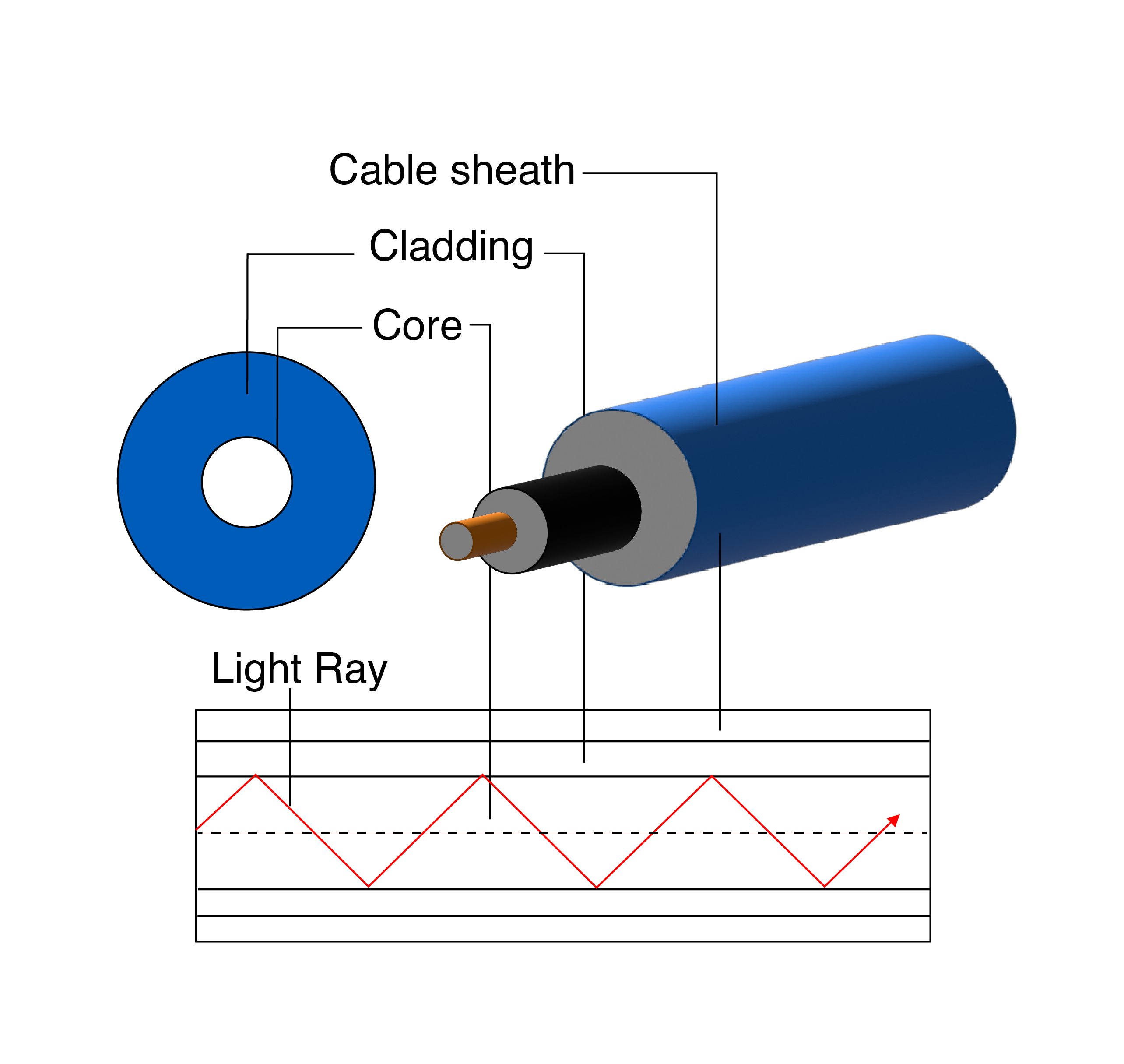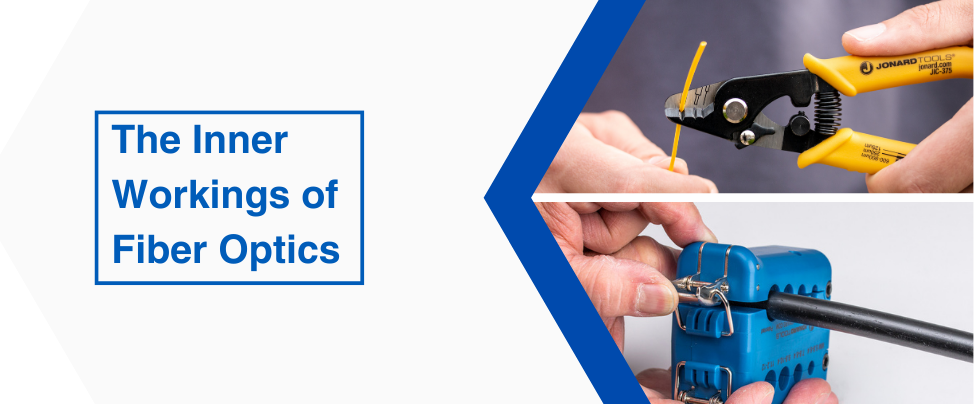Fiber Optics: The Inner Mechanisms Explained
Ever wonder what it takes to make basic communication possible? Communicating with people on a local and global level is, without a doubt, one of the most convenient technological advances of our time. Whether it be talking to a friend, family member, or business partner, being able to seamlessly communicate information with others has become an essential part of our everyday lives. All of this has been made possible by advances in technology within the Telecommunications industry, most notably Fiber Optics. As a result, we’ve developed quick and easy ways to transmit data throughout the world, making it possible to enjoy things like texting, video chatting, and streaming. In this article, we’ll explain the mechanisms involved in Fiber Optics technology, outlining the ways it has revolutionized our world.
What is Fiber Optics?
In 1888, Alexander Graham Bell introduced the photophone, which was a system that used light to transmit sound over long distances. Unfortunately, due to defects in the technology, it failed to gain much traction. Fast forward to 1952, and the first ever fiber optic cable was invented. Fiber optics uses thin, flexible fibers of glass to transmit light signals throughout a cable. Because data flows via fast-traveling pulses of light, fiber can transmit substantial amounts of data at high speeds. For instance, whereas a standard electrical copper signal can transfer up to 10 Gigabits per second, fiber optics can transmit up to 60 Terabits (which equates to about 700 times faster) per second. To put this in perspective, this allows you to download an HD movie in 6 seconds, 1,000 photos in 2 seconds, and an online game in only 20 seconds- nothing short of amazing!
How Fiber Optic Cables Work?
But how does Fiber Optics make this possible? As previously mentioned, fiber optic cables work by transmitting data via light, so understanding the properties of light is important to understanding its underlying mechanisms. First, it’s critical to understand refractive index. The refractive index of an object refers to how fast light travels through that object, with a high refractive index indicating a slower speed. When light travels from a medium with a high refractive index to a medium with a lower refractive index , light bends towards the interface. Additionally, when light is emitted from a specific angle (called a critical angle), it causes the light to bend to the extent where it creates internal reflection. This internal reflection is the key element in understanding how data travels through a fiber optic cable.
A fiber optic cable is fundamentally composed of a high refractive glass core and a low refractive protective covering (called the cladding), as well as additional protective layers. When light passes from the glass core to the cladding, the difference in refractive indices causes internal reflection within the core. This internal reflection, in turn, causes the light to zig zag throughout the core, allowing it to travel for long distances. Because of this mechanism, these cables can carry data underground and throughout oceans around the world to ensure global connectivity!

Despite the effectiveness of the mechanism, the light traveling through the core of a fiber optic cable inevitably experiences losses in strength. To combat this, engineers have designed amplifiers with the purpose of boosting the strength of optical signals in the communication system. These amplifiers are located at points of the fiber optic cable where strength starts to get weaker. Because of the boosted signals throughout the cable, light is able to travel for incredibly long distances, allowing us to have access to data all over the world!
Fiber Optic Cables vs Coax Cables
The ability to transmit data at high speeds has inevitably increased the popularity of Fiber Optics technology, which has in turn decreased the popularity of electrical coax cables. The main difference between the two is that, while fiber optics transmit information via light through glass fiber, coax cables use electrical signals via copper conductors. Since light travels at a speed much faster than electricity, this allows fiber optics to transmit information at much higher speeds (up to 60 Terabits per second compared to 10 Gigabits). This means an overall wider bandwidth, which in turn provides higher speed internet. Here are some of the other things to consider when comparing the two:
-
Reliability: Light travels through a glass fiber without any interaction with outside phenomenon. For this reason, fiber optic cables are much more reliable than coax cables. The electrical signals in coax cables can be affected by power outages and/or electromagnetic interference, making them unreliable at times.
-
Pricing: Coax cables are typically less expensive than fiber optics cables, especially considering the complex installation process for fiber.
-
Availability: More than 90% of American households have access to broadband internet, while only about 45% have access to fiber. Despite the many advantages it provides, expenses have made fiber less accessible.
The Future of Fiber Optics
Although access to fiber has been limited, that is undoubtedly changing. The United States has released many programs aimed towards increasing fiber accessibility throughout the nation (such as BEAD ).Similarly, Canada, Europe, and other countries have followed suit in investing significant amounts of resources towards providing access to fiber. Being the global leader in fiber optic tools, Jonard will be at the forefront of this movement. Our efficient, long-lasting tools will facilitate the production of infrastructure throughout the world, which in turn will create a new world of opportunity!

Comments
Login or Register to post comments.